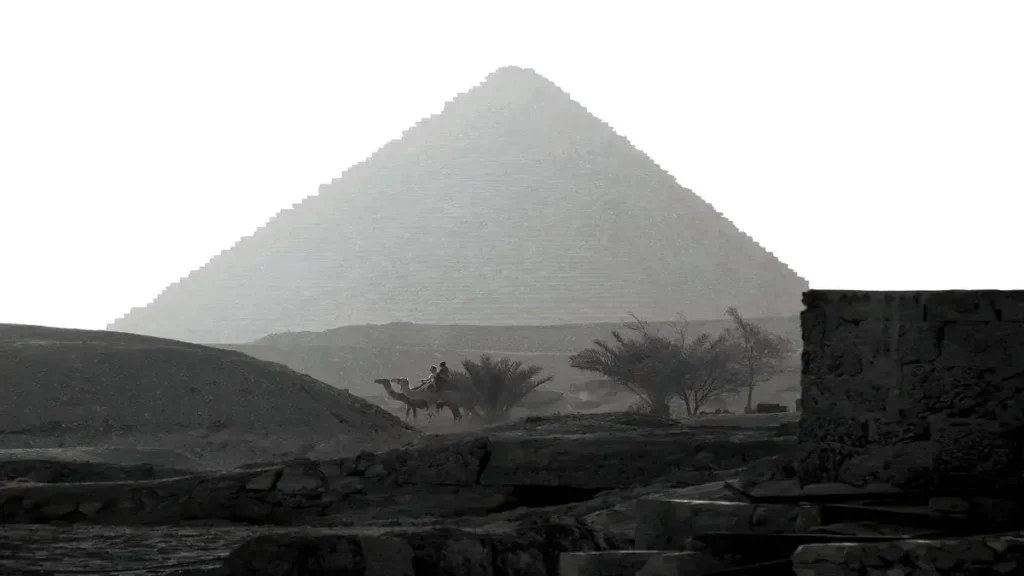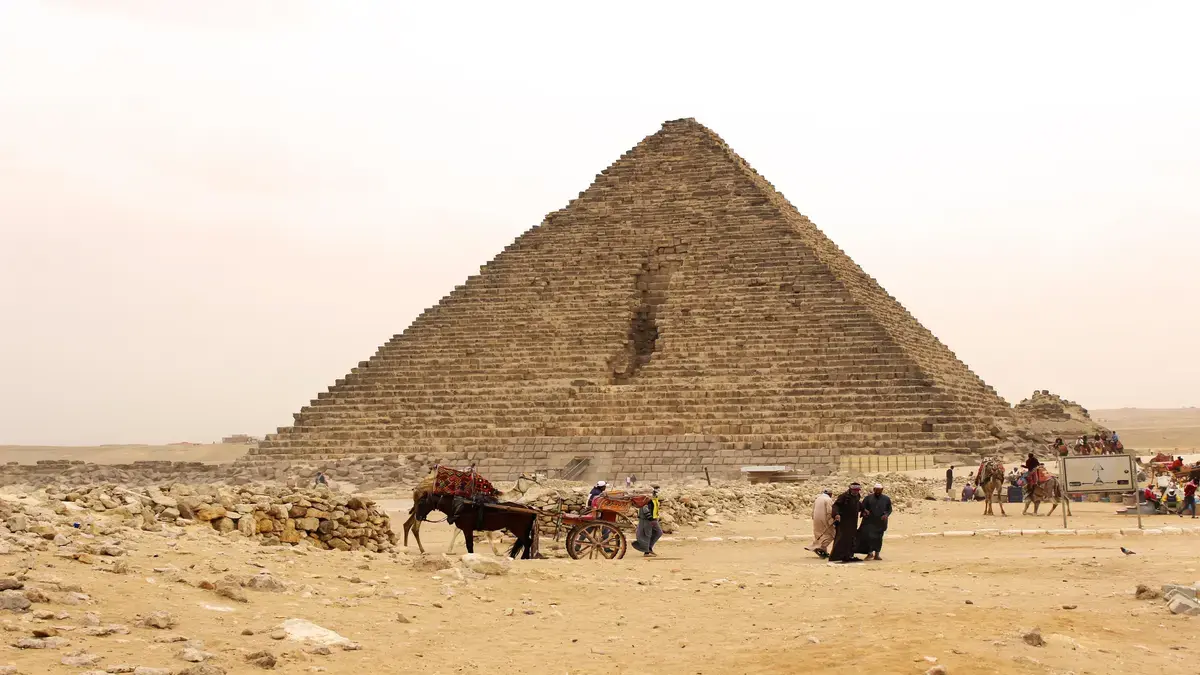Exploring the Mysteries of the Pyramids of Giza
Pyramids of Giza have fascinated and perplexed people for centuries. Exploring the Mysteries of the Pyramids of Egypt, uncovering the 3 Pyramids of Giza, sharing myths about the Pyramids, and the wonders surrounding these iconic structures is an adventure in itself. The complex construction theories and the secrets hidden within the chambers continue to captivate historians, scientists, and curious visitors alike. From the enigmatic alignment with the stars to the enduring legends of hidden treasure, the Pyramids of Giza never fail to ignite the imagination and intrigue of people around the world.
Key Takeway
- The Pyramids of Giza are one of the Seven Wonders of the Ancient World
- They were built as tombs for pharaohs and are a testament to ancient Egyptian engineering
- The Great Pyramid is the largest of the three and aligns with the constellation of Orion
- Archaeologists continue to uncover new information about the construction and purpose of the pyramids
- Visiting the Pyramids of Giza is a must for anyone interested in ancient history and architecture

What are the 3 Pyramids of Egypt
The Pyramids of Egypt are some of the most fascinating and iconic structures in the world. Built by the ancient Egyptians thousands of years ago, these pyramids continue to captivate our imaginations and leave us in awe of the ingenuity and skill of the people who built them.
There are many pyramids scattered throughout Egypt, but the most famous and well-known are the Pyramids of Giza. These three pyramids, located on the outskirts of Cairo, are the Great Pyramid of Khufu, the Pyramid of Khafre, and the Pyramid of Menkaure.
The Great Pyramid of Khufu
The Great Pyramid of Khufu, also known as the Pyramid of Cheops, is the largest and oldest of the three pyramids. It was built as a tomb for the pharaoh Khufu and is the only one of the Seven Wonders of the Ancient World that still stands today. Standing at a height of 481 feet, it was the tallest man-made structure in the world for over 3,800 years.
Inside the pyramid, there are several chambers and passages, including the King’s Chamber and the Queen’s Chamber. The construction of the pyramid is a marvel in itself, with the massive stones weighing several tons each and fitting together with incredible precision.
The Pyramid of Khafre
The Pyramid of Khafre is the second-largest pyramid at the Giza complex and was built for the pharaoh Khafre, who was the son of Khufu. It stands at a height of 448 feet and is easily recognizable by the limestone casing that still partially covers the top of the pyramid.
One of the most notable features of the Pyramid of Khafre is the Sphinx, which is located nearby. The Sphinx is a massive statue with the body of a lion and the head of a human, believed to represent the pharaoh Khafre himself.
The Pyramid of Menkaure
The Pyramid of Menkaure is the smallest of the three pyramids at Giza and was built for the pharaoh Menkaure. It stands at a height of 215 feet and is unique in that it has three smaller pyramids, known as queen’s pyramids, built alongside it.
Despite its smaller size, the Pyramid of Menkaure is still an impressive structure and offers a glimpse into the architectural and engineering skills of the ancient Egyptians.
In conclusion,
the Pyramids of Giza are a testament to the incredible achievements of the ancient Egyptians. These monumental structures continue to inspire wonder and awe, and their significance in history cannot be overstated. Whether you are a history enthusiast or simply curious about the wonders of the world, a visit to the Pyramids of Giza is an experience that should not be missed.
Myths about the Pyramids
Pyramids have always fascinated people around the world. These ancient structures, particularly the Pyramids of Giza, have been the subject of many myths and legends. While some of these stories are based on historical facts, others are simply products of imagination and speculation. Let’s explore some of the most popular myths about the Pyramids of Giza.
1. The Pyramids were built by aliens
One of the most enduring myths surrounding the Pyramids is that they were built by extraterrestrial beings. This theory gained popularity in the 20th century, fueled by science fiction and conspiracy theories. However, there is no concrete evidence to support this claim. The Pyramids were built by skilled Egyptian craftsmen and laborers using simple tools and techniques.
2. The Pyramids were built by slaves
Contrary to popular belief, the Pyramids were not built by slaves. The construction of these monumental structures was a massive undertaking that required a highly organized workforce. Archaeological evidence suggests that the workers who built the Pyramids were skilled craftsmen and laborers who were well-fed and properly compensated for their work.
3. The Pyramids were built in a short period of time
Another common myth is that the Pyramids were built in a very short period of time. In reality, the construction of the Pyramids of Giza spanned several decades, if not centuries. The Great Pyramid of Khufu, the largest of the three Pyramids, took an estimated 20 years to complete. The precise planning and execution required for such massive structures would have taken a considerable amount of time.
4. The Pyramids were built as tombs for pharaohs
While it is true that the Pyramids served as tombs for the pharaohs, they were much more than simple burial chambers. The Pyramids were designed as grand monuments to honor the pharaohs and their divine status. They were also intended to serve as a link between the earthly realm and the afterlife. The intricate design and symbolism found within the Pyramids reflect the religious and cultural beliefs of ancient Egyptian civilization.
5. The Pyramids were built using supernatural powers
Some myths suggest that the Pyramids were built using supernatural powers or advanced technologies that are beyond human capabilities. However, there is no evidence to support these claims. The construction of the Pyramids was a remarkable feat of engineering and architectural skill, but it was achieved through the ingenuity and hard work of ancient Egyptian craftsmen.
6. The Pyramids are aligned with the stars
It is often claimed that the Pyramids of Giza are perfectly aligned with certain stars or constellations. While there is some alignment between the Pyramids and celestial bodies, it is likely due to the ancient Egyptians’ knowledge of astronomy rather than any mystical significance. The alignment of the Pyramids with certain stars may have been a way for the ancient Egyptians to connect their earthly monuments with the heavens.
7. The Pyramids hold hidden chambers and treasures
Throughout history, there have been numerous claims of hidden chambers and treasures within the Pyramids. While some discoveries have been made, such as the burial chambers of pharaohs, no significant hidden treasures have been found. The Pyramids were primarily built as tombs and religious monuments, not as secret treasure troves.
In conclusion,
the Pyramids of Giza continue to captivate the imagination of people around the world. While there are many myths and legends associated with these ancient structures, it is important to separate fact from fiction. The Pyramids are a testament to the ingenuity and skill of the ancient Egyptians, and they hold valuable insights into the history and culture of one of the world’s greatest civilizations.
Frequently asked questions
What are the Pyramids of Giza?
The Pyramids of Giza are ancient structures located in Egypt. They are one of the Seven Wonders of the World and are famous for their historical significance and architectural marvel.
How were the Pyramids of Giza built?
The exact method of how the Pyramids of Giza were built is still a mystery. Historians believe that they were constructed using a combination of manpower, ramps, and levers, but the precise details remain unknown.
Can visitors go inside the Pyramids of Giza?
Yes, visitors can enter the Pyramids of Giza, but not all of them are open to the public. The Great Pyramid of Khufu, for example, has a limited number of tickets available for entry, while the other pyramids may have different accessibility. It’s best to check with local authorities for the latest information.

Este artigo foi criado pela nossa avançada ferramenta de criação de conteúdo. Quer produzir conteúdos de alta qualidade semelhantes sem esforço? Adquira nossa ferramenta hoje mesmo no Automatik Blog.







